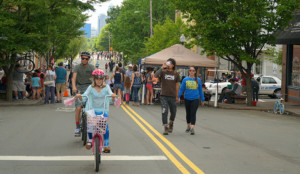 Pedestrian safety is an essential urban concern, with thousands of pedestrians being injured or killed in traffic accidents each year. When these incidents occur, determining fault is a crucial step in the legal process, impacting the pursuit of justice and compensation.
Pedestrian safety is an essential urban concern, with thousands of pedestrians being injured or killed in traffic accidents each year. When these incidents occur, determining fault is a crucial step in the legal process, impacting the pursuit of justice and compensation.
Surveillance footage is one of the most compelling and objective forms of evidence that can sway the course of a pedestrian accident case. The pedestrian accident lawyers at the Law Offices of Mickey Fine have experience handling pedestrian accident cases and understand the value of surveillance footage in proving fault.
In this guide, we’ll explore the power of surveillance footage in pedestrian accident cases, highlighting its importance and benefits for pedestrians, addressing the associated challenges, and sharing insightful case studies.
The Role of Surveillance Footage in Pedestrian Accidents
Surveillance footage is valuable in pedestrian accident cases as it provides an unbiased and accurate record of the accident. Here are some reasons why surveillance footage is crucial in pedestrian accidents:
- Accurate Documentation: Surveillance footage serves as an objective record of events leading up to pedestrian accidents. It captures the movements of both pedestrians and vehicles, clearly depicting the sequence of events. This documentation is instrumental in determining fault and liability, helping authorities and insurance companies make informed decisions.
- Identification of Contributing Factors: Analyzing surveillance footage allows investigators to identify various factors contributing to pedestrian accidents. This includes driver behavior such as speeding, distracted driving, failure to yield, and pedestrian actions like jaywalking or crossing against signals. Understanding these factors enables policymakers to implement targeted interventions to address specific issues and improve safety.
- Insights for Infrastructure Improvements: Surveillance footage provides insights into the effectiveness of existing infrastructure in safeguarding pedestrians. By observing accident hotspots and recurring patterns, city planners can identify areas needing improvement, such as inadequate crosswalks, poorly designed intersections, or insufficient lighting. This data-driven approach empowers authorities to prioritize infrastructure upgrades that are needed to enhance pedestrian safety.
- Enhanced Enforcement: Surveillance footage is a deterrent to reckless road behavior. Since their actions are recorded, drivers are more likely to adhere to traffic laws, such as speed limits and yielding to pedestrians. Similarly, pedestrians may exercise greater caution when crossing streets, knowing that their actions are under scrutiny. This self-regulating effect contributes to a safer environment for all road users.
- Educational Opportunities: Surveillance footage can be utilized for educational purposes, raising awareness about the dangers of negligent driving and pedestrian behavior. Public campaigns leveraging real-life footage can underscore the consequences of risky actions, fostering a culture of responsibility and respect on the road. By promoting safer behaviors through education, communities can reduce the incidence of pedestrian accidents over time.
The Challenges of Using Surveillance Footage in Pedestrian Accident Cases
Despite its undeniable value, surveillance footage presents challenges in pedestrian accident cases. These include:
- Availability and Quality: Surveillance cameras may only sometimes capture the entire incident or have a clear view of the accident.
- Privacy Concerns: While surveillance footage can provide crucial evidence, there are concerns about privacy violations. As such, using surveillance footage in pedestrian accident cases is subject to strict regulations, and proper consent must be obtained.
- Interpretation Bias: Surveillance footage may only sometimes provide a complete picture of the incident and can be open to interpretation.
As a result, it is essential to carefully analyze and corroborate the evidence with other sources to avoid any misinterpretations.
Final Word
Surveillance footage plays a crucial role in pedestrian accident cases. It serves as an unbiased record of events, identifies contributing factors and areas for improvement, enhances enforcement efforts, and offers educational opportunities.
As technology advances, surveillance footage will likely become even more prevalent in pedestrian safety initiatives, ultimately striving towards reducing the number of accidents and making our roads safer for all.


